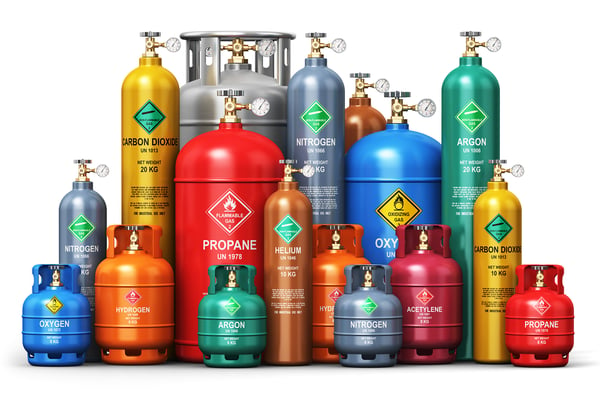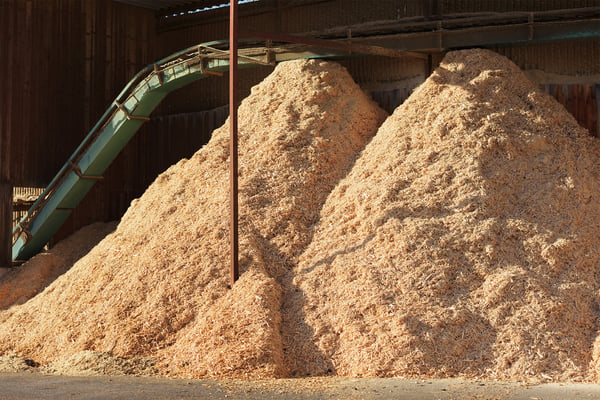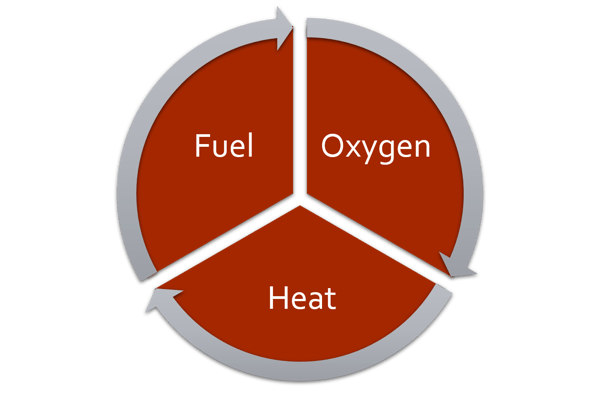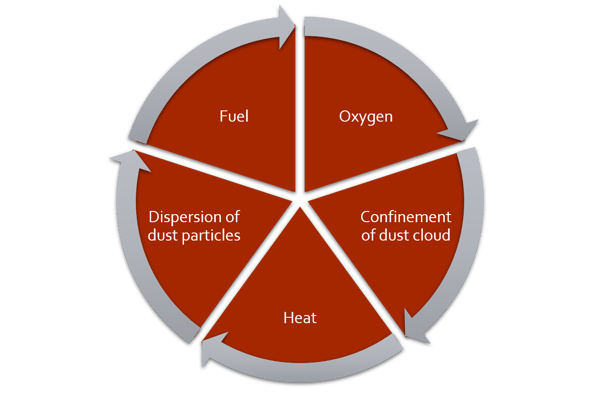DSEAR is an acronym for the Dangerous Substances and Explosive Atmospheres Regulations 2002 which requires employers to control the risks associated with explosions, fires and substances corrosive to metals.
What are dangerous substances?
Dangerous substances are any substances used or present at work that could, if not properly controlled, cause harm to people as a result of one of the three outcomes stated above.
These include substances such as paints, solvents, pressurised gases, flammable gases, dust from machining, sanding or processing operations, dust from foodstuffs, etc.

What does DSEAR require of employers?
Employers must:
- Find out what dangerous substances are in their workplace and what the risks are.
- Put control measures in place to either remove those risks or, where this is not possible, control them.
- Put controls in place to reduce the effects of any incidents involving dangerous substances.
- Prepare plans and procedures to deal with accidents, incidents and emergencies involving dangerous substances.
- Make sure employees are properly informed about and trained to control or deal with the risks from the dangerous substances.
- Identify and classify areas of the workplace where explosive atmospheres may occur and avoid ignition sources (from unprotected equipment, for example) in those areas.
Why is dust dangerous?
Okay, so paints, solvents, pressurised gases and flammable gases are all marked with flammable or explosive warning signs, we get that. But why dust...?

The reason is that some dusts have the ability to catch fire and explode in certain circumstances - these are known as combustible dusts.
Some of these dusts are from materials that are not "normally" combustible, but they can burn or explode if the particles are the right size and in the right concentration.
These can be from:
- Most solid organic materials (such as sugar, flour, grain, wood, etc.).
- Many metals.
- Some nonmetallic inorganic materials.
How do combustible dust explosions happen?
Any fire needs three elements. These elements are known as the "fire triangle":
- Fuel to burn.
- Oxygen.
- Ignition source (heat, spark, etc.).

A dust explosion needs two additional elements - creating what is known as the "dust pentagon":
4. Dispersion of dust particles in the right concentration.
5. Confinement of the dust cloud.

Dispersion means the dust particles are suspended in air. Confinement means the dust is in an enclosed or limited space. This restriction allows pressure to build up, increasing the likelihood of an explosion.
If the concentration of dust is too low, there is not enough of it present to fuel an explosion. If the concentration is too high, there is not enough oxygen to support combustion.
What conditions are needed for a dust explosion to happen?
For a dust explosion to occur, a number of conditions must be met including:
- The dust must be combustible and release enough heat when it burns to sustain the fire.
- The dust must be capable of being suspended in air.
- The dust must have a particle size capable of spreading the flame.
- The concentration of the dust suspension must be within the explosible range.
- An ignition source must be in contact with the dust suspension.
- The atmosphere must contain sufficient oxygen to support and sustain combustion.
- There must be a form of confinement or enclosure that allows pressure to build up.
How do I prevent a dust explosion?
To prevent a dust explosion you need to avoid any of the above conditions.
To do this we can follow the ERIC PD 6 step risk assessment model. This is an easy to remember acronym that will help prioritise health and safety hazard control measures in the workplace. It stands for Eliminate, Reduce, Isolate, Control, PPE and Discipline.
Eliminate. Firstly, is it possible to eliminate the issue by changing the material used to something that won't create a combustible dust?
In most cases this isn't possible so we move on to the next step.
Reduce. This can be achieved by reducing the amount of material used or by using a material that has lower risk of causing an explosion.
Isolate. For this step we need consider if it is possible to isolate the dust. Could all the dust produced by the process be extracted and sent to a dust collection system, ideally outside of the main building. Explosion safety valves should then be installed between the external dust collection system and the building so that in the event of an explosion the valve will close and prevent the explosion from entering the building.
However, in most cases this still doesn't completely remove the risk so we have to consider the next step.
Controls. In most cases this is the first viable option. It could involve implementing a regular dust inspection and control programme to inspect for any areas of dust collection both in open and hidden areas. It may also require the installation of proper dust collection and/or extraction systems. You should also prevent smoking, open flames and sparks in these areas and consider cleaning methods that avoid dust clouds in the area.
Dust suppression should also be considered as it will remove dust particles suspended in the air, likely reduce the temperature in the building and also reduce the flammability of the dust by wetting the particles.
Only once all of the above measures have been exhausted should we look at the next action.
Personal Protective Equipment. In this case, PPE is very much the 'last resort.' To ensure that you are sufficiently protecting personnel against dust explosions you will likely need to contact an expert for advice and training.
Discipline. And finally, to ensure everything is carried out as required it is essential to implement robust training, monitoring and reporting.
Has this opened your eyes?
Hopefully you have found this article helpful and now have a better idea of how to protect your workforce and premises from the risks involved. It is important that you now implement the actions that you have noted as soon as possible.




Share This Post
LinkedIn Facebook Twitter Google Plus Email